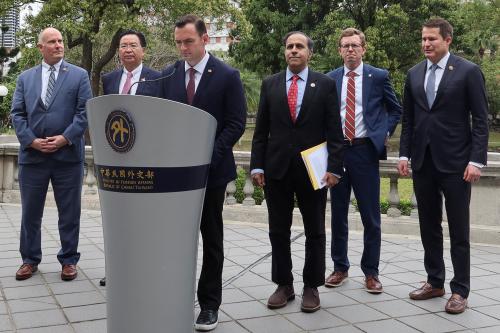Hillary Clinton isn’t often in the business of offering unsolicited advice to her Republican—or even Democratic—rivals in the presidential race. However, in a CNN interview with Alisyn Camerota on January 12, 2015, Hillary Clinton did just that. She did something quite taboo. She talked about the presidential transition.
Her comments did not flow from confidence that she would be elected president—a confidence she may indeed have. Her words came from experience, pragmatism and reality. They were words that did not simply reflect her own approach to a candidacy or a prospective administration. It was advice to everyone running for president about the right thing to do—not for themselves, but for the American public.
I want to think hard—if I do get the nomination, right then and there—how we organize the White House, how we organize the Cabinet, what’s the legislative agenda. You know, the time between an election and an inauguration is short. You can’t wait. I mean, you can’t take anything for granted; you need to keep working as hard as you possibly can. But I think it’s important to start planning because we know what happens if you get behind in getting your agenda out, in getting your appointments made. You lose time, and you’re not doing the work the American people elected you to do.
Presidential candidates almost never speak of a transition until they are declared the president-elect in the late hours of the Tuesday following the first Monday in November. Candidates fear being accused of taking the election for granted, or “measuring the drapes.” They worry such planning will signal to voters an off-putting overconfidence.
Those fears may be legitimate, but acting on those concerns can be dangerous. If a voter believes a candidate should not prepare for a new administration until they are officially elected, that leaves the president-elect about 11 weeks to ready themselves for the busiest, most complicated, most important job in the world. In those 11 weeks, a president-elect would need to think not just about the 15 Cabinet secretaries who serve as the most visible political appointees in government, but literally hundreds and thousands of other posts. (One dirty little secret is that the President of the United States appoints over 3,000 people to his or her administration.)
Presidents have to think about the structure, order, and sequence of their legislative agenda. They need to communicate their intentions and plans to congressional leadership. They need to think about organizing a White House. The truth is from president to president, the White House looks the same from the outside, but is structured and functions dramatically differently on the inside. Presidents have myriad important decisions to make that will set the tone and agenda for the following four years and will affect every American in some way. Eleven weeks is not enough time. Clinton acknowledges this.
Clinton’s “bold” statement actually reflects a reality in American politics. As soon as an individual accepts his or her party’s presidential nomination, they are entitled to funding, office space, and government email and technology as part of the transition process. The Office of Personnel Management is involved, as is (of late) the Office of Presidential Personnel for the outgoing administration. The presidential transition is an essential part of democracy, policymaking, administration, and the continuity of government. Every four years, the government supports two transitions—one that comes to be and one that closes up shop.
In one way however, Hillary Clinton is entirely wrong. Waiting until you receive the nomination is too late to begin thinking about the transition. As I have written before, every presidential candidate should start thinking about a transition as soon as they announce their candidacy. They don’t need a full Cabinet chosen on Day 1 of the campaign, but they should designate one or two close advisers to organize for the process, begin considering names for posts, think through the types of policies to propose in the first 100 days, and begin what is one of the most complicated managerial tasks in the world.
Hillary Clinton is right “it is important to start planning,” and it’s also never too early to do so. I hope Clinton’s claim that one should start upon securing the nomination is a reflection of that fear of the “drape measuring” accusation. I hope she is planning her transition now. I hope Bernie Sanders and Ted Cruz and Donald Trump and John Kasich and everyone else is planning their transition right now. It’s essential. Clinton knows the challenges of setting up a White House and the complications that early disorganization can cause; she saw that dysfunction first hand in 1993. But most candidates have also worked in or around the White House or have been in politics long enough to know the importance of an effective transition. And candidates who haven’t, like Donald Trump and Carly Fiorina, should be more inclined to set up a transition early, as they have more managerial experience than anyone else in the race.
To this end, I have a modest proposal. It probably won’t happen. It’s likely one that candidates would fear, and it would likely only be effective if everyone is on board. Every current presidential candidate should sign a pledge committing to two things. First, by February 1, 2016, they will designate at least one staffer, adviser or confidante as a transition director. Second, they will not publicly criticize another candidate—of either party—for having a transition staffer or team in place. Call it a “Transition Truce.” But the reality is that such a pledge—and the actions behind it—are essential for a better functioning, better prepared, more effective administration, no matter who it is who swears the oath exactly one year from today.



Commentary
Hillary Clinton’s advice that every Republican candidate should embrace
January 20, 2016